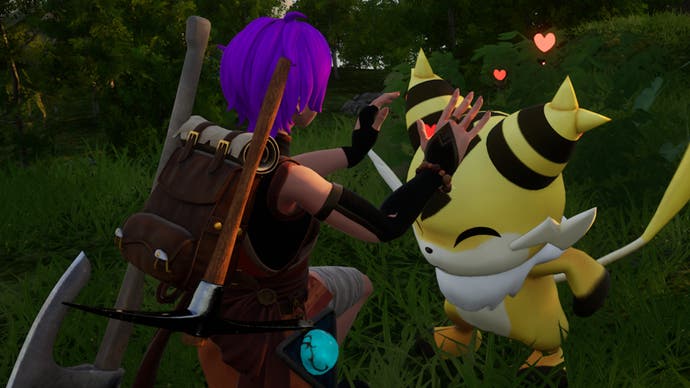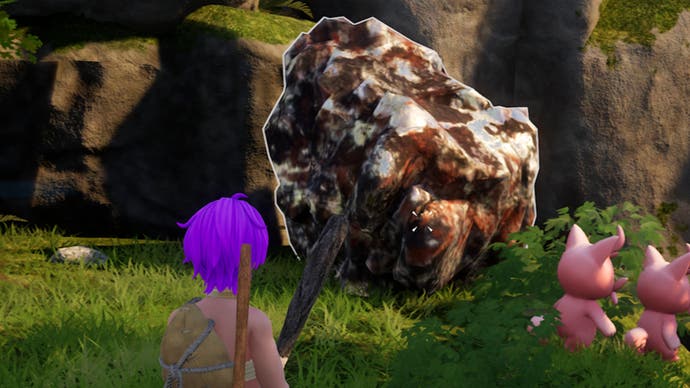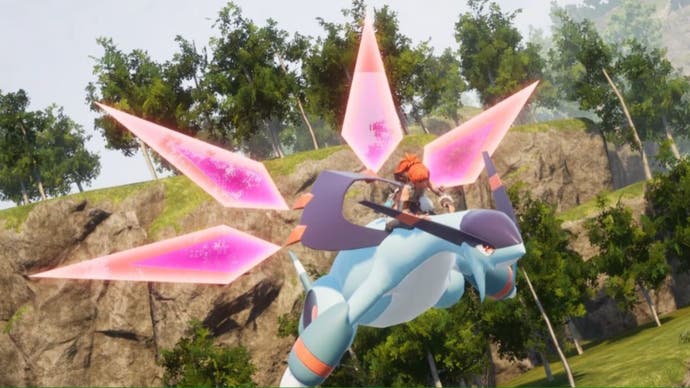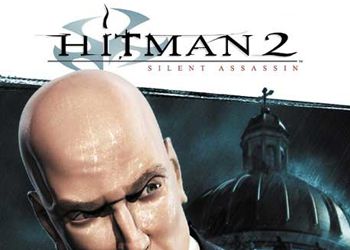Bard’s Tale, The (2005): Game Walkthrough and Guide
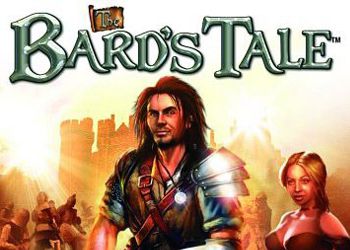
Funny swaying gait finally came out the game on our strict court. The gait is not at all because the game came out the bedrooms, it just has a very fun character. And, although most promises were not fulfilled, the product turned out not just playing, but even quite worthy of our ordine.
Rules of the game
Were jealous of the substractions we, of course, do not become, but now you can find a faster access. Moreover, our console friends are already a bit familiar with the basics – The Bard’s Tale is based on the engine of the Dark Alliance seaming game and not very far away from it.
We are dealing with the typical RPG / ACTION, T.E. Most of the game you will have to “pacify” of various kinds of Monsters, mocking it by pumping the character. The management is very unusual, the movement of the main character lies on the right mouse button, and when the left bard is pressed, it strikes right in front of them. What did you want? Port from the prefix allors. In many ways, precisely because of such a strange system, most of the game I ran with a bow, which is equipped with such a wonderful thing as auto trading.
By the way, about weapons. Its selection is carried out through the circular menus caused by clicking on the corresponding key, and the onions are in one menu, and the sword – in another. Why is it so arranged, it is not very clear, maybe it’s a lack of possible choice options (maximum – four) for each menu.
In the game, the game is interested in the magic system, tied to the use of artifacts and magic musical instruments, which allow you to cause the beings to afford yourself (the hero is the caller, the original find, in my opinion). I will tell all this later.
| Interface | |
| Weapon | |
| Sword | 3-C |
| Mace | 3-D |
| Two-handed weapon | 3-A |
| Sword and dagger | 3-W |
| Special weapons | |
| Singing Sword | 4-W |
| Onion | 4-D |
| Fist | 4-C |
| Shadow Axe | 4-A |
| Artifacts | |
| Caleigh’s Artifact | 1-C |
| Herne’s Artifact | 1-D |
| Lugh’s Artifact | 1-W |
| Mannann’s Artifact | 1-A |
| Power regulator | A-W-D (in the order of magnification) |
| Calling | |
| Mercenary | 2-S-S |
| Knight | 2-S-D |
| Heroine | 2-s-a |
| Brude | 2-S-W |
| Elemental | 2-d-s |
| Behemoth | 2-D-D |
| Thunder Spider | 2-D-A |
| Knocker | 2-D-W |
| Crone | 2-W-A |
| Enchantress | 2-W-W |
| Bodyguard | 2-W-S |
| Rogue | 2-W-D |
| Explorer | 2-A-S |
| Gouger | 2-A-D |
| Light Fairy | 2-A-W |
| Rat | 2-a-a |
| Other | |
| R | Treatment |
| F | Actions key |
| X | Card Management |
| Menu | ESC |
| Character leaf (inventory, quests, characteristics) | Tab |
And so we approached the most delicious: scenario-dialogue. I truly long ago I did not laugh – the first part delivered a special joy
games, then jokes somehow come, and although they are still cheerful, but not to colic. By the way, we are dealing with unique in some way. Of course, there were already parodies games, for example, on spy fighters (Evil Genius), but here is a game that parods genre Games, It seems that it comes out for the first time.
This is interesting: Once a long time ago, the Interplay Studio, in which one of the main creators of The Bard’s Tale – Brian Fargo, released the same game. However, nothing in common, there are no two bards. That game – a typical representative of the RPG of his time: the appearance of “first person” (though, it is not clear whose person), the party of heroes, a lot of catacombs and t.P. Which was a genre in those distant times, you can see in the appropriate article of Psmites.
Given this approach to writing a scenario, absolutely not surprised by his linearity. In the dialogs you can sometimes Choose a line of behavior: Smiling face or frowning – just click the mouse. The difference in reality is minimal. However, for some reason, rudeness is usually achieving the best results. In addition, the bard, powder with acunts offensive properties, is able to deliver you a lot of pleasant minutes – sharpness and really funny.
Linearity in the game triumphs everywhere. Here, for example, a global map. Yes – it is, you can get there, just going to the city gate and pressing the F key. Moving is organized without delights: in the same way as in the main game. Click (right-click!) At the point – Bard goes there. Highlighted towns running monsters, random meetings – sea. But do not hurry into distant wanderings. Cities are opening in stages, and even if you get to the deadline – you don’t stretch.
Nevertheless, the game has three different endings, but they are selected at the very last moment, there is also a city that you can not attend (Finstown), but he, to put it mildly, is not too rich for quests.
In addition to the global card, there is also a ministry, the default hanging in the upper right corner of the screen. When you press the x key, it can be deployed to the full screen (it turns out some kind of map in Diablo 2), and when re-removed from the screen. The conventions are quite intuitive: the orange arrow is the main character, green points – allies, red – enemies, an orange point – “quest” place, white square – the place of transition to another location, and finally the purple point is the save point.
It is important: Saving, in the best traditions of console games, occurs in specially reserved places. Annoying with unaccustomed, of course, but points are placed competently, and the game balance is largely connected with this arrangement.
Interestingly in the game made system of equipment. In the process, we select many objects dropping out of enemies, but they are immediately transformed into a solid monetary equivalent. Obviously, these items are made at all exclusively to hang the player. How do you, for example, a red hat and a basket that dropped out of a wolf? Weapons and armor are also selected automatically, the best for each type (old again is transformed into money), so even in the store there is no possibility to buy a thing worse than the equipped.
To view your items, features and quests, simply click Tab – Pop the Character Sheet Screen. “Navigation” is carried out by mouse. On the main screen we see a huge image of the bard on the left and the characteristics of the right. Together with the characteristics, side parameters are indicated: Health (depending on Vitality), mana (depends on the musical instrument used, is spent on creating creatures) and the number of experience remaining until the next level. Just below you will see five menu items corresponding to the viewing of current tasks, equipment, known melodies, skills and bonus items.
Bonus items are special things that increase your characteristics and well hidden by designer levels.
So, the introductory part seems to be completed. Now to the game.
This is a bug: Attempts to reassign management can lead to fatal consequences: for example, it is impossible to take a bow into the hand or call some creatures.
Role-playing system
You can distinguish two main character combat velocity: archer and hand-to-hand fighter. My sympathies are on the side of the archer, after the start of the game, I wish it for a long time that there was a lot of glasses in force. Archer to be more convenient – it’s easier with the profile skill, it is only one, and you can take a dog on extra glasses (see. “Talents”). And some moments and at all without a bow are not going out or passing with difficulty, the restriction in these moments was introduced albeit artificially, but, alas, not a player to decide – it is necessary to adapt.
In general, one of the other does not fully exclude, so the fighter Be sure At the beginning of the game should familiarize yourself with the basics of ownership onions, and the archer – be ready to wave a sword. The most important characteristics for the first I would give strength and endurance, and for the second – a sense of rhythm and agility.
Characteristics
There are six parameters and 12 points on the distribution. The initial values are determined by the complexity of the game (respectively: 4, 6 and 8). Maximum value – 20.
Power / Strength. Characterizes the physical strength of our heroic bard. The greater the parameter, the more damage we apply a hand-to-hand weapon. On bows, naturally, does not affect.
Endurance / Vitality. Determines the number of health units at the main character. Rather important characteristic, swing if not first, then, in any case, in the second place.
Good luck / Luck. Good luck – she is luck and there. Great luck – more often you get on the enemy, maybe even critically, less often get on you. Not very important characteristic, but from time to time to add points it makes sense.
Dexterity / Dexterity. The same as the power, but for long-range weapons. Even if you are experiencing persistent hatred of the bows, at the beginning of the game it is worth putting here at least a few points (see. above).
Charm / Charisma. Affects the purchase price of things in stores. And all. Considering that most of things can be obtained free of charge, and there are no special problems with money in the game, charm gets an honorable prize “the most useless characteristic”.
Rhythm / Rhythm feeling. This is something new new. However, the bards are put to have a good musical hearing. Since the creatures caused is the only one, not counting the dog, your purse, namely, the parameter corresponds to their characteristics, it is worth considering it quite important.
Talents
The skills in this game were transformed into some kind of PERKS from Fallout’a. Every two levels we have the opportunity to get a new or improve old skill. Skills names change with a new level, but it is understood that this improvement for already existing, will not be difficult. For example, after Power Shot for onions is a special. Attack arrow Storm.
Two-handed Weapons / Two-Handed Weapons. Allows you to use two-handed weapons. Heavy weapons, but damage above all silence.
Two weapons / Dual Wield. Allows you to fight, holding a sword in one hand, and in another – Dagger. Pretty comfortable, efficient and dynamic battle style.
Bulaw / FLAIL. As it is easy to guess, allows you to use a chain. Weapon is powerful, but not too convenient in circulation.
On a note: Then opens special. Attacks for the three above-mentioned types of weapons.
Stunning shield / Shield Charge. Randomly determined, bard managed to stun the enemy with a sudden slap shield or not. If you prefer not to take new armory skills, but to use the traditional sword and shield is your skill.
Passive Stunning Shield / Shield Bash. Skill for some reason really duplicates the previous. With the only difference that he is passive.
Strong shot / Power Shot. Improves (weapons can use and without taking skill) Your abilities of the onions, opening a new type of attack. Valuable skill.
Critical Strike / Critical Strike. Gives a chance to apply the enemy unexpectedly big damage to his powerful blow (for a simple sword). Take worth.
On a note: For performing special. Attacks you need to hold the left mouse button for a while.
Treasure Hunter / Treasure Hunter. Increases the number of money drop away from the defeated enemies, which, by the way, and so abuse. So I do not see a special reason.
Dog Training / Train Dog. In the game, as promised, there is an opportunity to raise a dog from a small puppy to a large and terrible wolfhound. Finding a dog is not difficult – the miley white with black stains puppy sits straight and slightly away from the entrance to the tavern where the game begins. You need to talk to the dog, to show a friendliness and understanding to it (choosing a smiling face in the answer in the options) – the beast with you. He can not even die – only for a while loses consciousness upon receipt of grave injuries. Having spent one point skill, our hero will be able to increase animal combat abilities. By the way, without him, it is quite possible to do, but with him somehow more interesting.
Magic
Artifacts
At certain points of the game, you will be rewarded with the ability to use magic crystals, which in huge quantities are stored in all kinds of boxes and chests. To create spells, you just need to press “1”,
Then, using the selection buttons (by default it is W, A, S and D), determine the type you need, and then choose its power. To determine the force, only the three first of the above-mentioned keys. 1, 2 or 3 crystals are spent, the longer spent, the stronger the spell. What? Surface system? Yes not such a tricky. For example, to cure (see. Below) you need to press 1-W-A sequentially.
Caleigh’s Artifact. Gives at the very beginning of the game after passing the tavern. One crystal will give you a fully filled health scale, two – in addition to cure blesses bards, reducing the damage taken by half, and three – along with all the above give temporary (very temporary) invulnerability. At the very beginning of the game, the cure is really useful, but with the appearance of the opportunity to call Cargu-priestess this necessity disappears. From the theoretical point of view, invulnerability looks interesting, but in almost most situations or it is possible to get out, or quite ordinary treatment, or short-term invulnerability will not help. And in trifle situations, you do not want to spend valuable crystals – it is better to save them on combat spells for battle with “bosses”.
12
